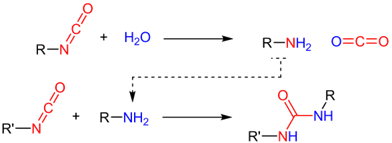Polyurethanes
Polyurethanes (also shortened to PUR or PU) are plastics or synthetic resins. Polyurethanes are usually used as 2-component materials consisting of resin and hardener. They can be formulated and used both as compact materials (open-cell or closed-cell) and in the form of foams.
Compact materials are primarily used to protect components in the electronics industry. A large number of chemical raw materials, additives, fillers and other aggregates make it possible to realize a wide range of application profiles.
We are your experts for customized casting resin systems and can produce casting compounds with product properties ranging from hard to soft, from tough to brittle, from low viscosity to high viscosity/stability, from very fast to slow curing, from hydrophilic to hydrophobic. It is also possible to incorporate special properties such as flame retardancy, thermal conduction or thermal insulation, compressibility and many more.
For more detailed information, please refer to our comprehensive polyurethane instruction.
Product overview - Polyurethane cast resins
Below you will find a selection of our polyurethane casting resins. Many other modifications are possible on request. Clicking on the product name will take you to the corresponding product page including all data sheets.



